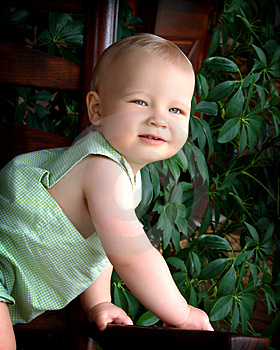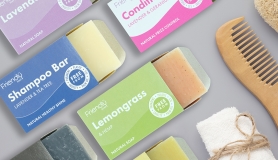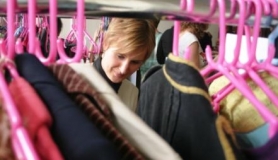One of the reasons why it is important to consider making our homes cleaner and greener is because of the increasing numbers of manmade chemicals we are introducing into our living spaces. Since the Second World War we have introduced more than 80,000 chemical substances into our homes in the form of cleaners, toiletries, pesticides and plastics. As we are unsure of the effect that these will have on our families’ health in the future it makes sense to source environmentally friendly products, especially during the early years. Infants are so much more susceptible with their thinner, more absorbent skin and immature respiratory and immune systems.
Many of these conventional household products are also harming wildlife when they leach into rivers and into our water system. It is no surprise that many cleaners bear the warning “keep out of reach of children†given their ingredients, but there are alternatives. We can clean our homes using vinegar and lemon juice if we choose to. We can source natural flooring and bedding that has not been treated with chemical dyes and glued together with formaldehyde adhesive. Babies don’t really need all the things we are encouraged to buy as new parents. Love, food, clothing and shelter, these are the essentials. It’s worth making sure that both the essentials and the luxuries are as natural as possible, to give your new arrival the best start in life. Here are some common objects found in a young family’s home and some reasons for choosing natural alternatives.
FLOORING Since babies and young children spend so much time so close to floor level it is important to consider green flooring options for your home. Look for wood, lino, cork or other natural materials such as jute and coir. Carpets can be backed with PVC, which will give off gases and is slow to decompose if taken to landfill. They are also a trap for dust and breeding ground for dust mites and fleas. Laminate flooring will have MDF backing, which contains formaldehyde glue, which can release harmful toxins. The best option is to get recycled wooden boards, which are hardwearing and easy to clean. Warmth and comfort can be obtained by using rugs produced by craftspeople who are guaranteed a fair wage for their work. Sheepskins are lovely for newborn babies to relax on and if produced organically will ensure better animal welfare and environmental standards.
FURNITURE When choosing furniture steer clear of MDF or chipboard. These are made by gluing wood particles together often using toxic glues and formaldehyde. Sustainable, untreated hardwood is the best option. If you are buying a cot, look for one that has a dual purpose, i.e.) it converts to a bed, giving it greater longevity and making it less wasteful. Best of all is to look for solid wood furniture second-hand and if necessary customise using natural paints or wood treatments.
PAINTS No paint is completely safe but ‘natural’ paints cause very few toxic emissions and they biodegrade safely in land and water. The heady fumes emitted by most paints are known as VOCs (Volatile Organic Compounds). ‘One coat’ or ‘quick drying’ paints offer convenience aided by a cocktail of chemical ingredients, so are best avoided. Although natural paints will require more patience you can be sure that the companies that produce them have a better ethical record and that the end result will not adversely affect the air you breathe or the wider environment.
TOYS Reports of phthalates or plastic softeners in PVC toys have led many families to choose wooden toys over plastic. Greenpeace has warned parents that the toxins in plastic toys can leach out when chewed or sucked. It is possible to find PVC-free plastic but wood is ideal from an aesthetic and environmental point of view. Look for FSC certified wood to ensure that it is not the product of monoculture but that the trees are grown in well-managed forests.
BEDDING Much of the standard bedding available for babies and young children in the UK has been treated with flame retardant chemicals, which have been linked to cot death, allergies and respiratory problems. Other nasties can include strong bleaches, formaldehyde and dyes. Babies spend up to 60% of their lives in bed so it is wise to choose materials that do not leach chemical compounds. Luckily, there are a small number of companies committed to providing organic and natural bedding for the whole family. When purchasing a mattress look for those made from organic wool, unbleached cotton or natural latex. Use unbleached sheets made without chlorine or optical whiteners. Most conventional products have been treated with formaldehyde and commercial cotton farming is highly wasteful and damaging to the environment. 3% of the worlds cultivated land is used to grow cotton and a shocking 25% of the world’s chemical fertilizers and pesticides are used in it’s production. Organic cotton on the other hand is soft, GM free and grown without the use of pesticides.
CLOTHES If you can, choose organic clothing for your baby, fabrics will not have been grown or treated using pesticides and artificial fertilizers. They will not contain flame retardant chemicals, formaldehyde, chemical dyes or bleaches, all of which could leave your baby predisposed to allergies. Natural fabrics, in contrast, absorb moisture and allow the skin to breathe, keeping your baby at a healthy temperature. If organic clothing seems cost prohibitive try to buy natural for those items of clothing that are closest to your baby’s skin, such as nappies, vests and bodysuits. Use eco-friendly detergents or better still, eco-balls to wash your family’s clothes.
LIGHTING This should be flexible enough to provide good clear light for daytime use (if required – natural daylight is better environmentally and financially) and a softer atmosphere for naps and night time. Switch to energy saving light bulbs. They cost more but save up to ten times their price over their lifetime. A salt crystal lamp will provide a soothing light for night time whilst also producing a strong negative ionisation, benefiting health and improving the air quality.
AIR Good ventilation is the key to fresh smelling environments. Open the windows wide on warm days, and have plenty of green plants in rooms as they purify the air. Forget air fresheners, as these are harmful to the respiratory system, especially those of young babies. Televisions, radios, computers etc, all give out EMF (electro magnetic fields). They have been shown to alter sleeping patterns, lower the immune system, and affect moods. Keep your baby’s sleeping area as far away from electrical equipment as possible. Keep bedrooms free from EMFs.
NAPPIES After the initial outlay, real nappies work out much more cost effective than disposables. They are also much better for your baby’s skin, free from the gels, glues, chlorine, bleach, plastics, dyes, perfumes and toxins used in disposable nappies. Organic nappies are beneficial for the environment, your family’s health and your pocket. Using a nappy laundering service can make it even easier for you, it is still cost effective in comparison and this is the most environmentally friendly method.
TOILETRIES Babies don’t need toiletries. Soaps can dry out their skin and conventional toiletries are best avoided as they often contain ingredients such as parabens and sodium laureth sulphate, which have been linked to breast cancer and have hormone disrupting properties. However there are some sweetsmelling, gentle baby care products on the market, free from parabens and chemical nasties. These can be especially beneficial when your baby’s skin needs extra care, for example in cases of eczema or nappy rash.







